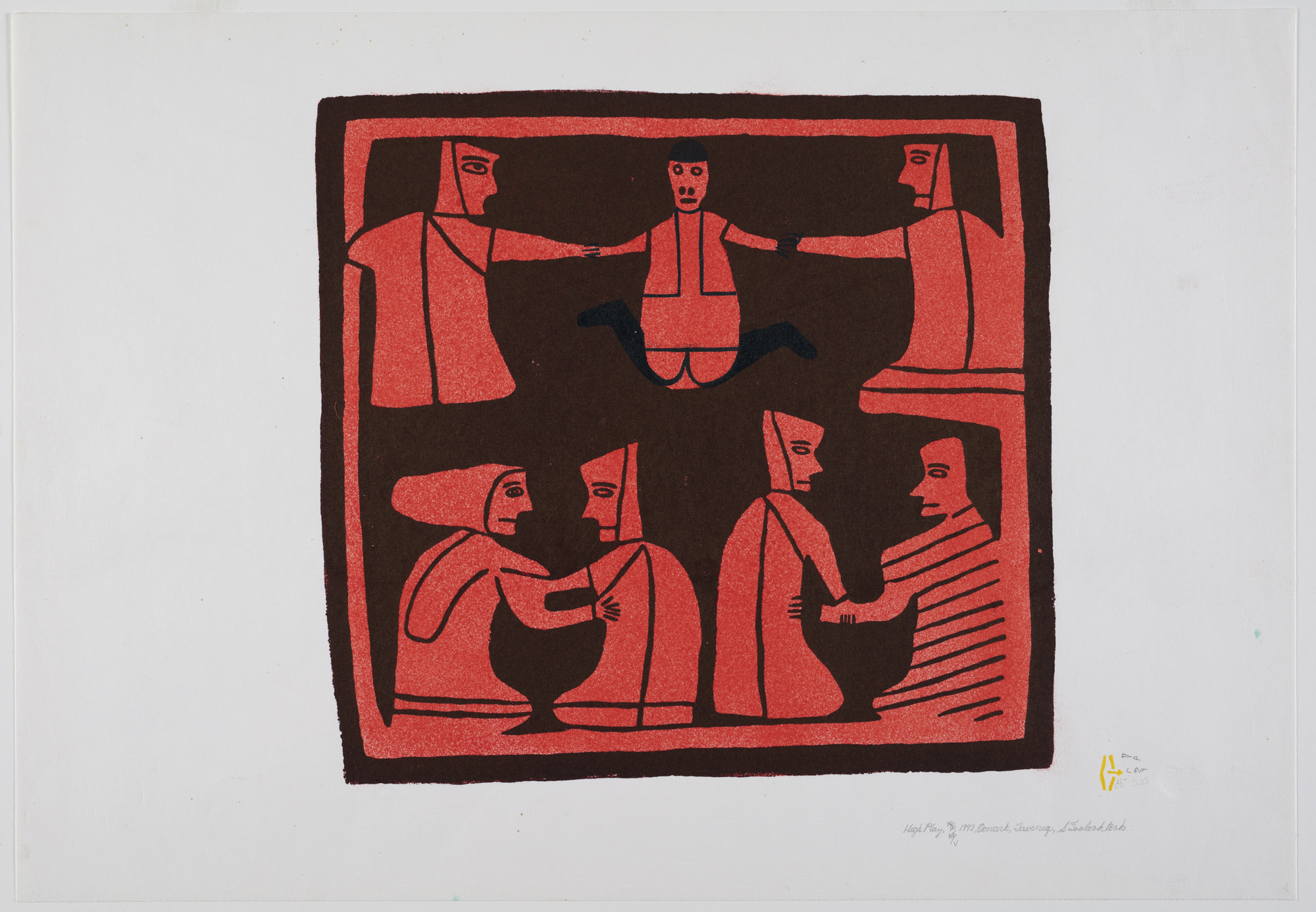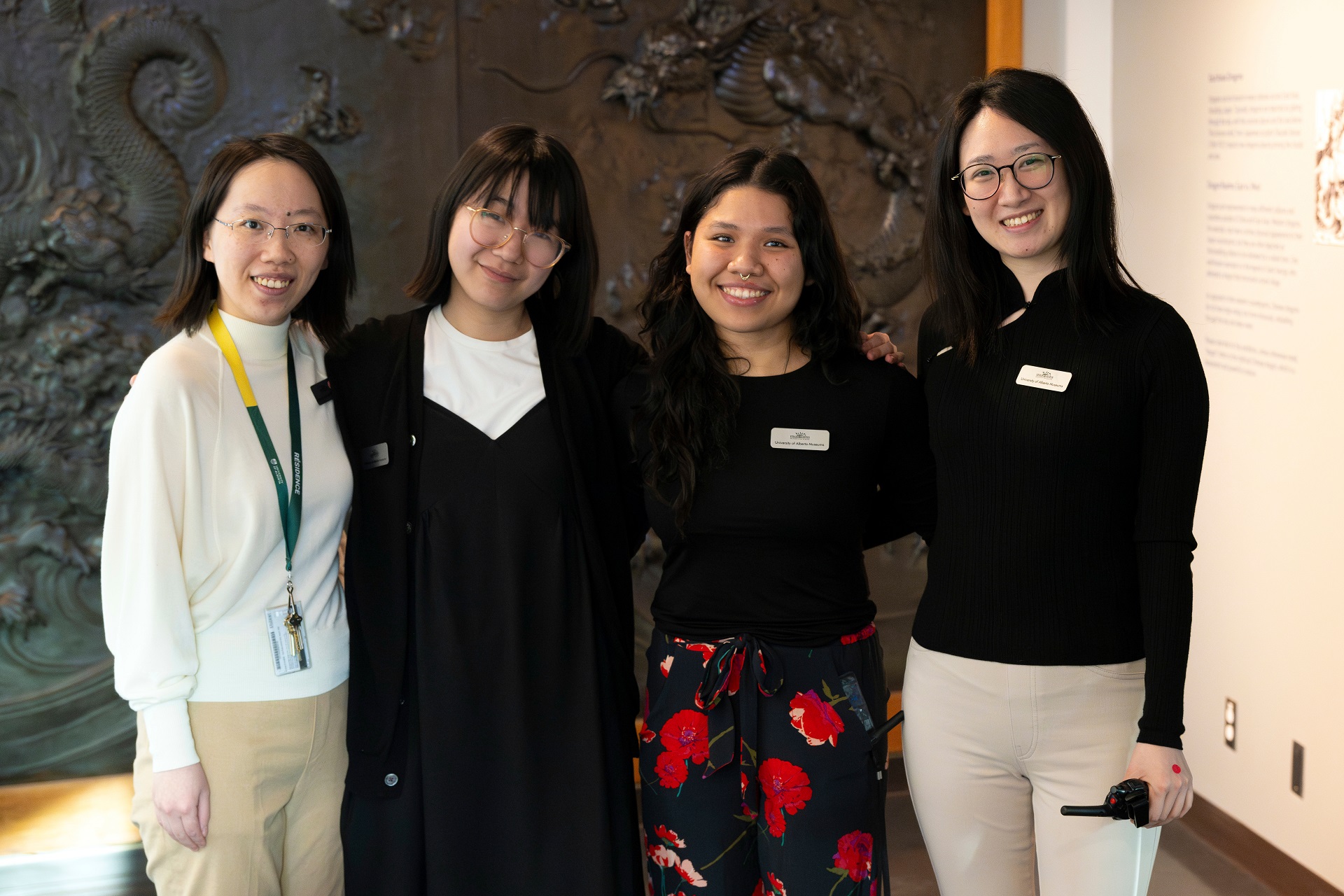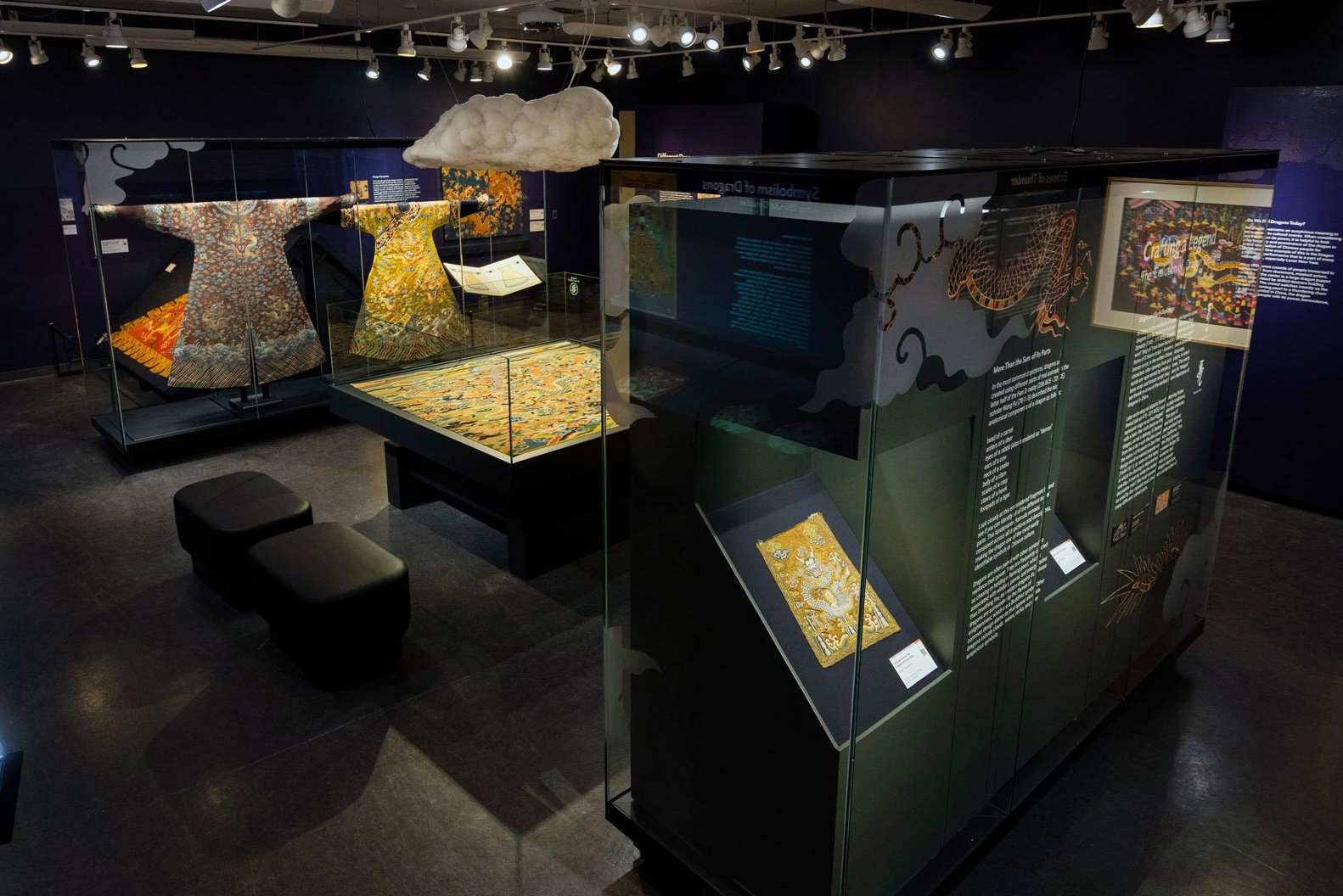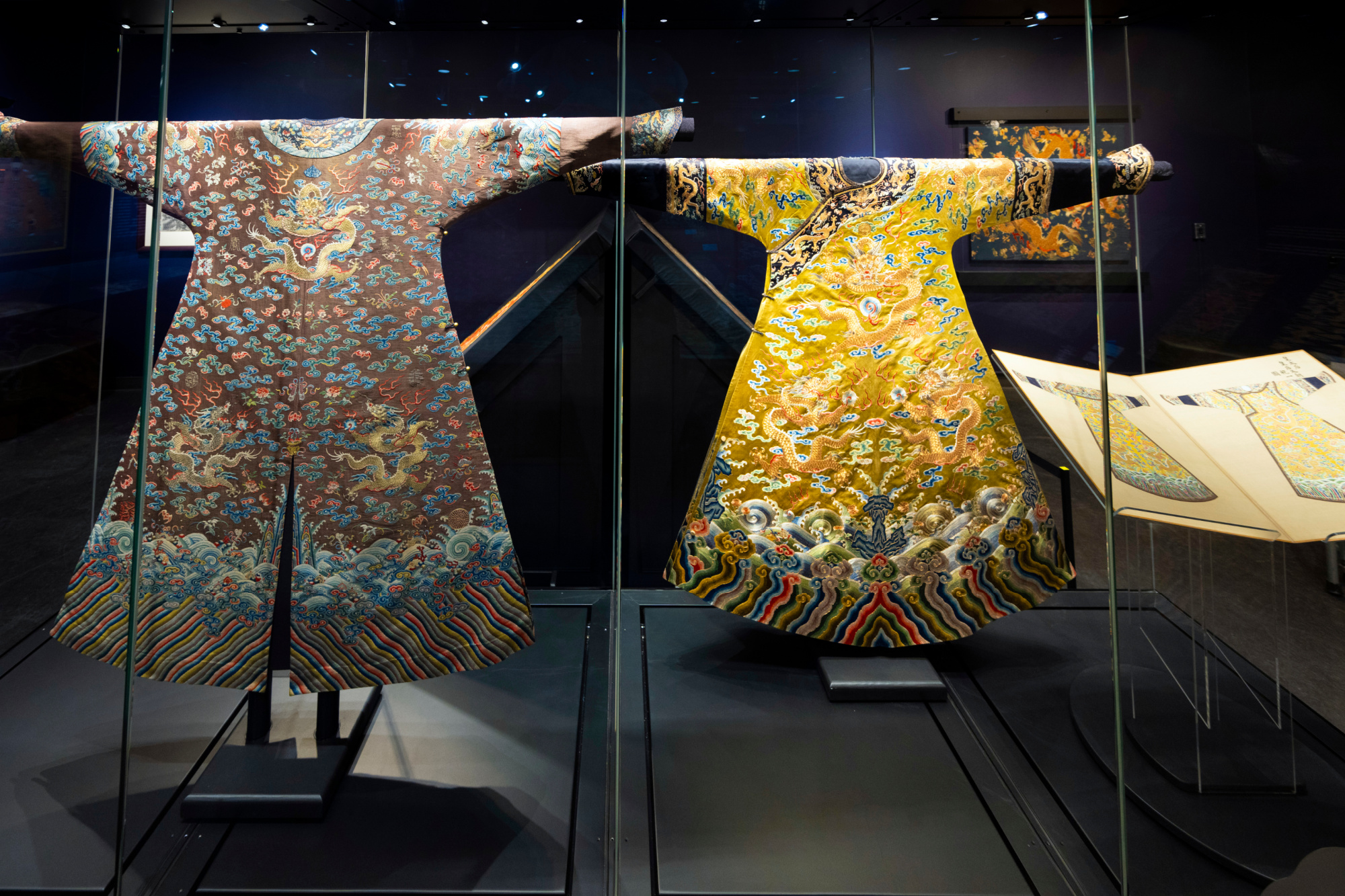Art in Focus: "High Play" by Jessie Oonark

"High Play," 1972; Ink on paper; stonecut and stencil; Jessie Oonark, OC, RCA: Born Back River, Nunavut, 1906, Died Churchill, Manitoba, 1985; University of Alberta Museums Art Collection, University of Alberta Museums; 1980.13.5
A celebrated artist in her time, Jessie Oonark captured the traditions, stories, and practices of Inuit life in her work. In the stonecut print from the University of Alberta Museums Art Collection, High Play (1980.13.5) depicts three types of traditional endurance and strength games played in the Arctic. As shown in the print, some of these games involve either pulling or holding onto a partner. Moreover, many of these games were not only for sport, but also for “preparation for life and survival on both physical and psychic levels.”1 Oonark’s graphic representation of traditional games is also part documentary in nature as it recorded memories of traditional life, which provided her with an abundance of inspiration throughout her career.
Originally known as the Haningayok (Inuktitut for the Great Fish river), the Back River area of Nunavut takes its current name from Sir George Back, an English naval officer who travelled to the arctic in 1834.2 The region has long been a place teeming with caribou, muskox, arctic char and the hardy flora of the Tundra. More recently, the region has seen rapid development of mining and resource extraction, namely uranium, which has disrupted significant aspects of life in the Arctic.3 It was here in the Back River area where multidisciplinary Inuk artist Jessie Oonark was born and lived most of her life, before relocating to Qamani'tuaq (Baker Lake) in the 1950s.4
Unique to printmaking in Inuit Nunangat, the process of stonecut printing involves multiple steps. First, the stone is first sourced and flattened. An image is then traced onto the stone and the stonecutter delineates the carved areas with India ink. The stonecutter carefully carves away, leaving the raised image on the stone. The stone is then inked, paper is pressed onto the stone and a print is gently pulled from the surface.5 This art form was initially established by government-supported co-operatives during the mid-1950s, which were meant to provide Inuit wage labour and as a means for developing the local economy in accordance with a Canadian cash economy.6 Ultimately, this was a process that saw Inuit groups relocating (and at times, forcefully) and a shift away from land-based and established ways of living.
In 1975, Oonark was elected to the Royal Academy of Arts and was named Officer to the Order of Canada in 1984 for her exemplary contributions on Inuit culture.7 Her work is represented in the collections of the University of Alberta Museums Art Collection, National Gallery of Canada, Museum of History and the Winnipeg Art Gallery among many other institutions. In addition to her artistic achievements, Oonark had influenced generations of Inuit artists (including 8 of her children who became artists in their own right) and was also widely acknowledged for her textiles and drawings.8 Her work represents the skill and artistry of Inuit women artists and the enduring knowledge they infused in their work.
1 George Swinton, “Skill, Humour and Celebration: An Introduction,” Inuit Games and Contests: The Clifford E. Lee Collection of Prints. Edmonton: University of Alberta Museums, 1978, 8.
2 James H. Marsh, “Sir George Back,” The Canadian Encyclopedia, https://www.thecanadianencyclopedia.ca/en/article/sir-george-back, accessed 1 March 2022.
3 Joan Scottie, “Nunavut Inuit should be wary of ever-evolving mine plans,” Nunatsiaq News, https://nunatsiaq.com/stories/article/game-changer/, accessed 28 February 2022.
4 "Jessie Oonark," Inuit Art Quarterly, https://www.
5“Stonecut,” Dorset Fine Arts, https://www.dorsetfinearts.com/stonecut, accessed 1 March 2022.
6 Marybelle Mitchell, “Inuit Co-operatives,” The Canadian Encyclopedia, https://www.thecanadianencyclopedia.ca/en/article/inuit-co-operatives, accessed 2 March 2022.
7 K.J. Butler, “Jessie Oonark,” The Canadian Encyclopedia, https://www.thecanadianencyclopedia.ca/en/article/jessie-oonark, accessed 2 March 2022.
8 Sarah Milroy, “Flashback: Jessie Oonark,” Inuit Art Quarterly, https://www.inuitartfoundation.org/iaq-online/30-3-flashback-jessie-oonark, accessed 1 March 2022.
This web story is part of the University of Alberta Museums Art Collection Spotlight Series, a collection of web stories aimed to share works of art from the University of Alberta Museums Art Collection with the world. Posted monthly, these stories connect works of art in the Collection to important matters on our campus and in our world.



